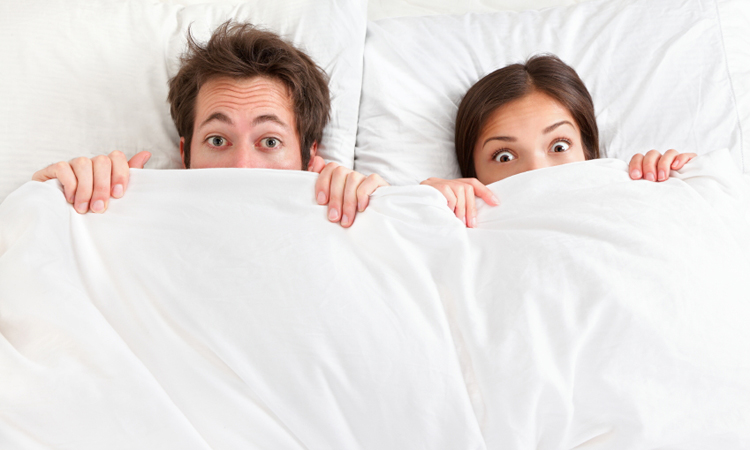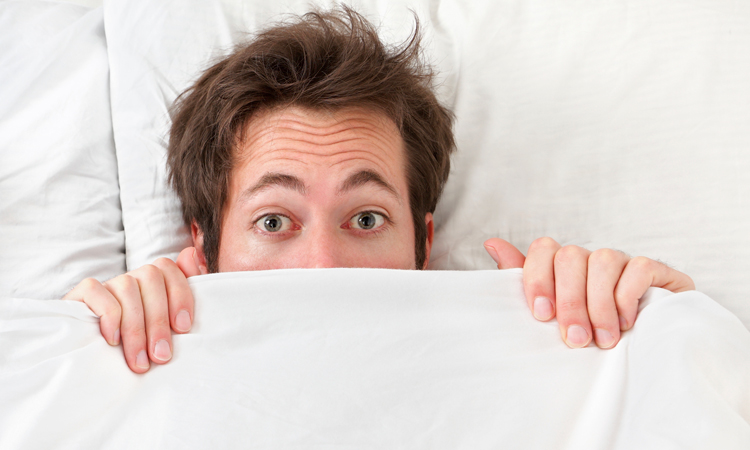In the mood for some self-lovin’? So is the Museum of Sex in New York City, where the interactive “Splendor in the Grass Kinesthetic Camping Ground” exhibit features a tent outfitted with a reflective interior to capture every seductive pose and move that you make on yourself. Exhibit creators explain, “Self-exploration is an important part of sexual development. From a very early age, we learn to explore and touch our bodies. We learn to see ourselves as sexual beings. …This tent is a personal exploration of your own body.…Go ahead and fall in love with yourself!”
Think selfie-obsessed homo sapiens are the only ones falling in love with themselves? Travel down the Museum’s hall to “The Sex Lives of Animals” exhibit, past the life-size sculpture of the threesome of copulating deer, past the wall on dolphin blowhole sex, past the panda porn and make a beeline for “Pleasure and Animal Sexuality,” where a video loop intersperses scenes of an elephant and a giant tortoise sexually stimulating themselves.
Masturbation, by both sexes, has also been widely documented in primates, said to be our closest living relatives in the animal kingdom. Primate expert Dian Fossey reveals in Gorillas in the Mist: “I let a few minutes pass before sitting up to see, much to my amazement, Puck – a male juvenile – actively masturbating.…his eyes were closed, and he wore a semi-smile expression.”
Amorous mammals and randy reptiles have long been engaging in masturbation. But in fact, history shows through ancient art and writings, so have we.
Down and dirty
 However, there came a time in history when the question arose: is masturbation healthy or is it – good heavens! – self-pollution? Just when did self-lovin’ become so dirty?
However, there came a time in history when the question arose: is masturbation healthy or is it – good heavens! – self-pollution? Just when did self-lovin’ become so dirty?
Self-pollution. Self-abuse. Onanism – a fancy-schmancy term for masturbation or self-love, used back when many people were determined to put fear in the hearts of those who dared explore the sexual capacity of their bodies by themselves.
Masturbation leads to blindness! Madness! Reduced height! Hair on your palms! Where did all this self-lovin’ hatin’ come from? Those repressive Puritans! And those stodgy Victorians with their suppressed desires – and their breakfast cereal, too!
Which brings us to corn flakes. Yes, those crunchy golden flakes that were originally invented in 1878 by John Harvey Kellogg, a medical doctor in Battle Creek, Michigan, and a gung-ho leader of the anti-masturbation movement, as part of bland diet for children to decrease excitability and help fight off their wicked urge to engage in self-abuse. Who knew?
The 19th century also featured some fearsome-looking anti-masturbation devices. Take the jugum penis – a jagged metal ring fitted to the base of a penis that would clamp down on a sudden case of arousal. Too much masturbation, according to the myths, robbed the body of sperm, thought to carry vital energies necessary for health.
Flash forward: how masturbation can keep the doctor away today

In modern times, medical experts claim it’s not just apples – or corn flakes – that keep us healthy. The National Health Service in Sheffield, England, created a leaflet, several years ago to be distributed to students, titled Pleasure, with the slogan “an orgasm a day keeps the doctor away” and “health promotion experts advocate…30 minutes physical activity three times a week. What about sex or masturbation twice a week?”
A far cry from Victorian times. Dr Debby Herbenick, a sexual health educator at The Kinsey Institute, notes that while the 1800s saw many myths, “masturbation is not harmful. It will not make people sick or unusually fatigued, nor will it make them grow weak or feeble.…[It] helps quite a lot of people to feel relaxed, to fall asleep or simply to feel content and satisfied.” However, she says, “in rare cases, people may masturbate so often…it gets in the way of their ability to hold a job, attend school or maintain a healthy relationship with another person.”
However, some relationships can benefit from self-pleasure, according to an article from WebMD. “[M]asturbation is a good way of relieving the sexual tension that can build up over time, especially for people without partners or whose partners are not willing or available for sex.” The article adds, “Masturbation also is a safe sexual alternative for people who wish to avoid pregnancy and the dangers of sexually transmitted diseases.”
Not just for ‘bad girls’ (or boys)
While science may recognize that masturbation is good for sexual health, stigmas still persist, running more along gender lines. Perform a Google search for “stigma about masturbation,” and you’ll get over 360,000 hits. The first page features titles, such as: Female Masturbation is Natura; Social Stigma Ought to be Put to Rest; Women and Masturbation – From Stigma to Self-Confidence; C’mon, Ladies, Masturbation Isn’t Just for Bad Girls.
Isn’t it high time to put all those stigmas to bed? So, look in the mirror, turn on some mood music, such as If Loving You Is Wrong, I Don’t Want to Be Right; Dancing With Myself; or, the Divinyls’ I Touch Myself, and, go ahead, fall in love with yourself all over again.



